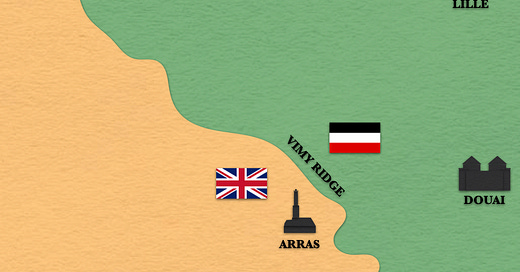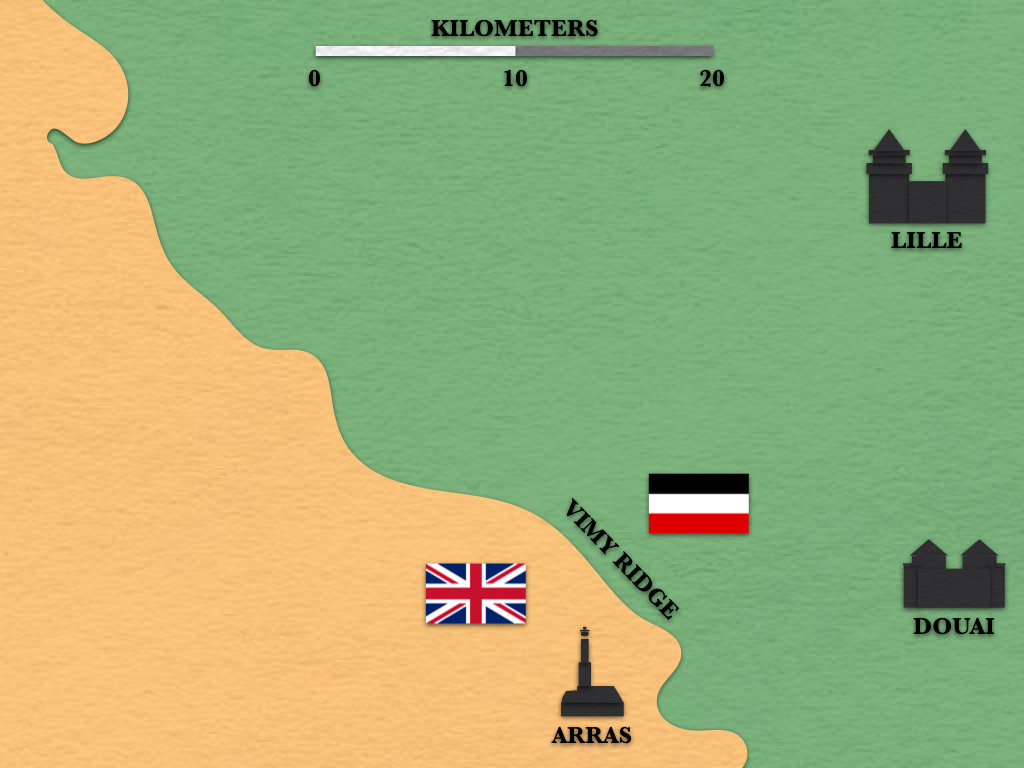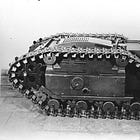Welcome to the Tactical Notebook, where you will find more than four hundred tales of armies that are, armies that were, and armies that might have been. If you like what you see here, please share this article with your friends.
In the English-language literature of the First World War, the term “bite and hold” describes attacks aimed entirely at the capture of particular pieces of real estate. In particular, the expression refers to offensive undertakings conducted by British Empire forces on the Western Front in 1917 in which the attackers stopped moving forward as soon as it established control of the terrain in question.
Paradoxically, the first of the “bite and hold” attacks of 1917, which took place at Arras on 9 April 1917, had originally been conducted to set the stage for an open-ended operation to follow, an offensive in which the British and Canadian divisions would only stopped moving when compelled to do so by German resistance. Nonetheless, the successful ground-grab that resulted provided a model for attacks that, from the very start, served no immediate end other than the taking of well-defined pieces of terra firma.
In many respects, the British “bite and hold” attacks of 1917 resembled the German “attacks with limited objectives” of the early months of position warfare on the Western Front. Both, for example, employed large numbers of heavy field howitzers, extensive counter-battery efforts, and painstaking provisions for the removal of barbed-wire obstacles.
At the same time, each type of attack took place within the context of a very different campaign. The German Empire conducted “attacks with limited objectives” in order to reduce the number of units needed to hold the Western Front, thereby freeing formations to fight against Russia and Serbia. The British Empire conducted “bite and hold” attacks in order to tie down German divisions that would otherwise be deployed against their allies.
On 2 August 2023, in the course of providing an overview of the war in Ukraine, Mick Ryan described the Ukrainian attacks in Zaporizhzhia that began on 4 June 2023 as “bite and hold approaches.” In some respects, this characterization fits the undertakings in question. After all, the Ukrainian forces do not seem to have made any attempts to exploit the seizure of ground with immediate follow-on attacks, let alone the sort of multi-echelon attack that would be needed to achieve a breakthrough.
That said, the places in Zaporizhzhia attacked in June and July of 2023 lack the features that provided the “bite and hold” attacks of the First World War with their raisons d’être.
The high ground captured during the battle of Arras, for example, provided the victors of that battle with two important advantages. First, it allowed British and Canadian observers to monitor the vast Plain of Douai, which extended to the north and the east by two dozen kilometers or so. Thus, the Germans located on that plain could not do much in the way of moving or building without being seen. Second, the ridges protected British Empire forces to the south and the west, and the installations that supported them, from all ground-based observation and a good deal of German artillery fire.
The long spur surmounted by the town of Robotyne, which was the object of several attacks in June and July of 2023, rises as high above the surrounding countryside as Vimy Ridge towers over the Douai Plain. However, rather than extending along the line that separates two belligerents, it runs perpendicular to it. Thus, instead of being protected from hostile observation and fire, Ukrainian forces on the spur can be seen, and shot at, from both sides.
For Further Reading:











